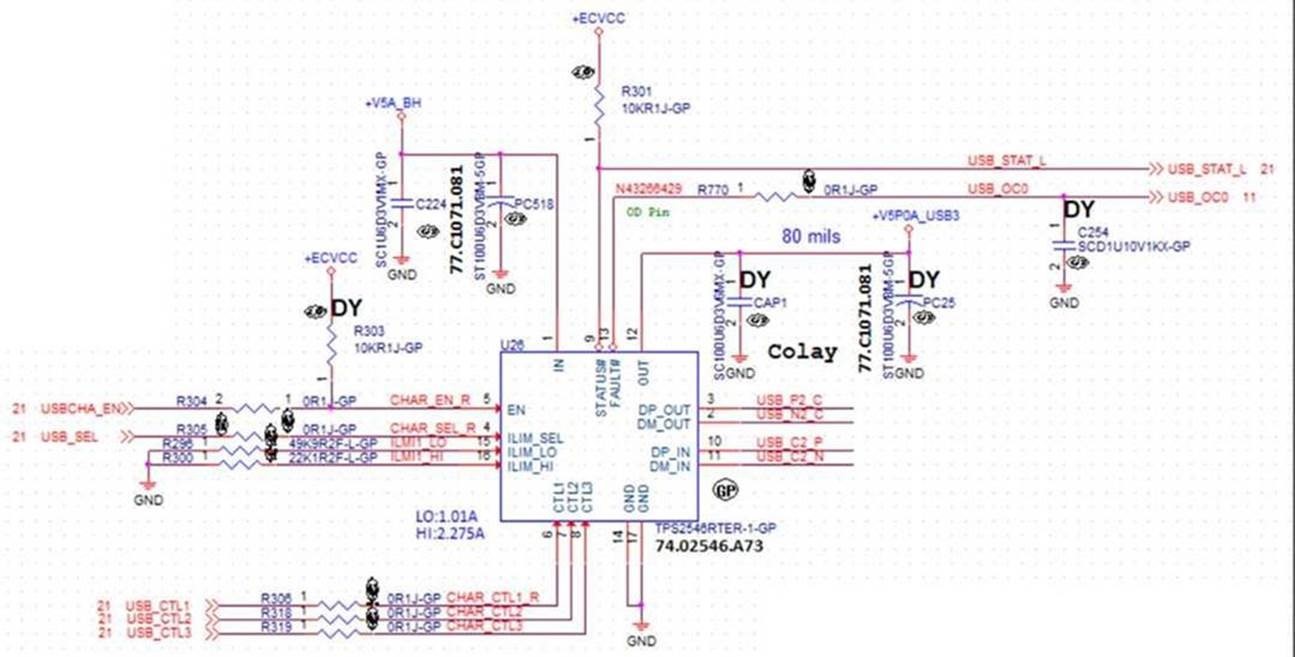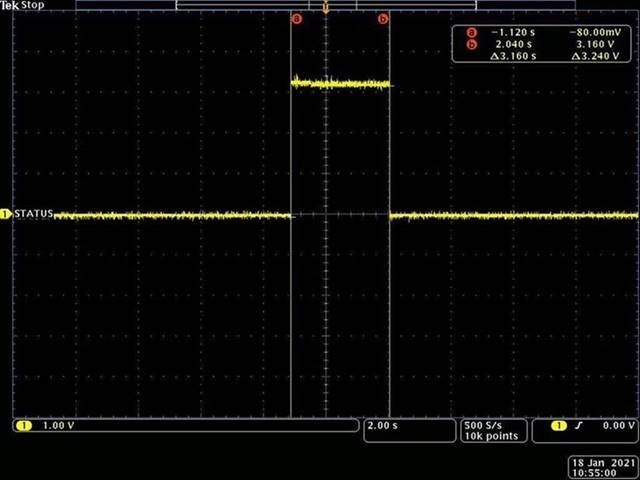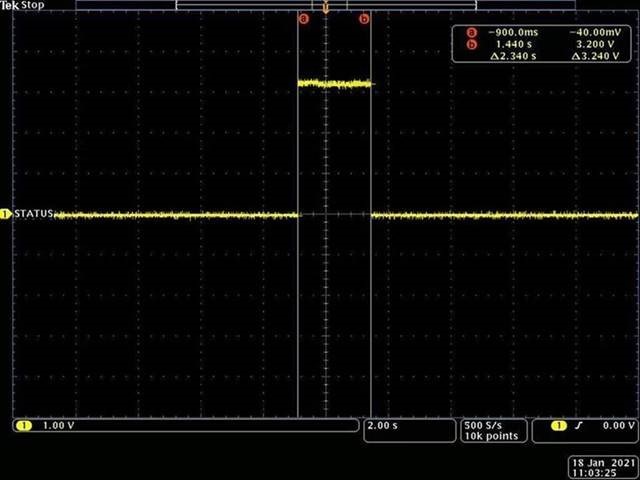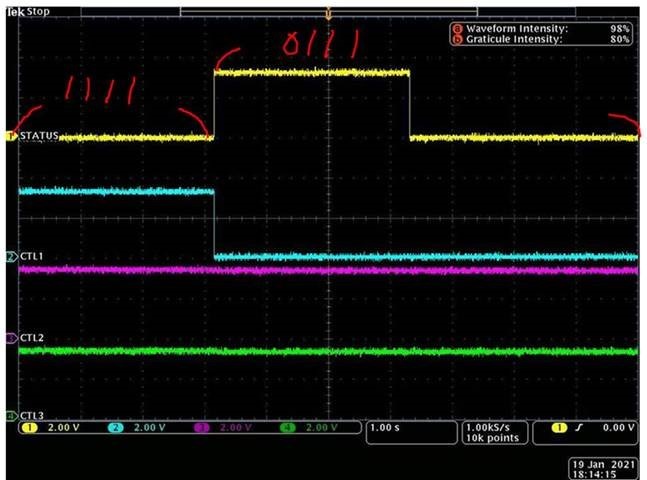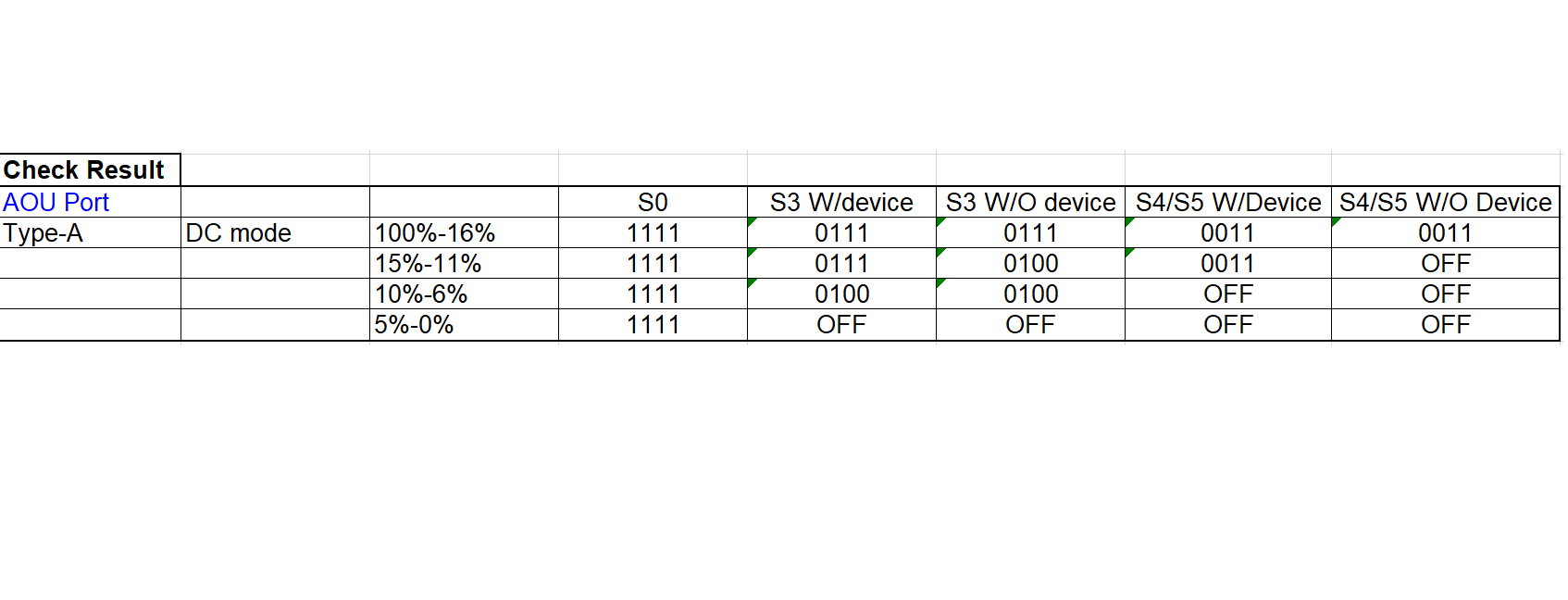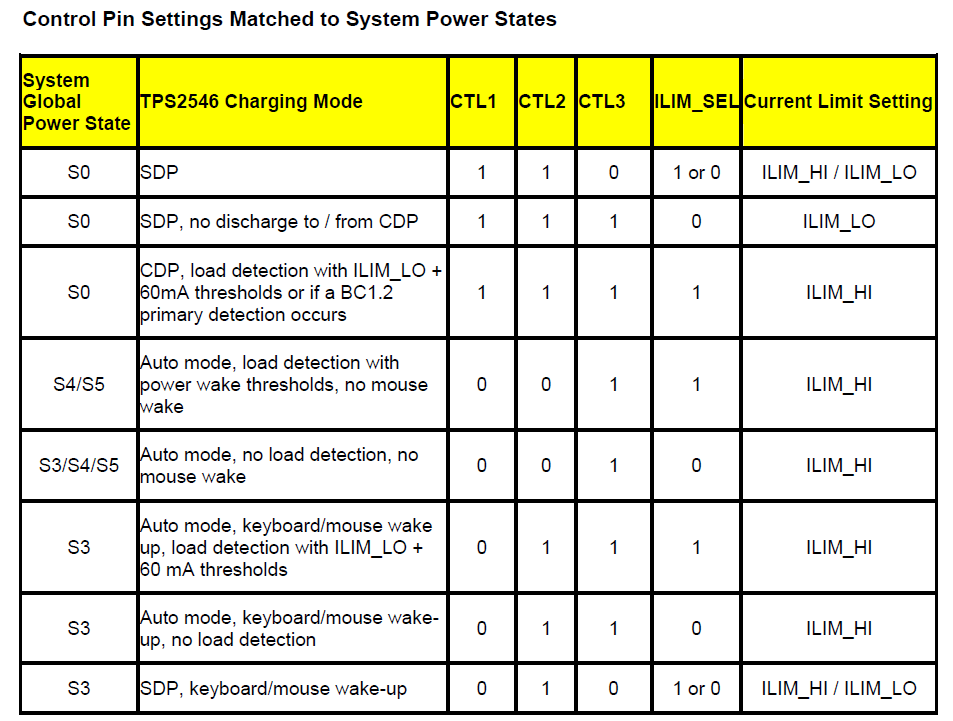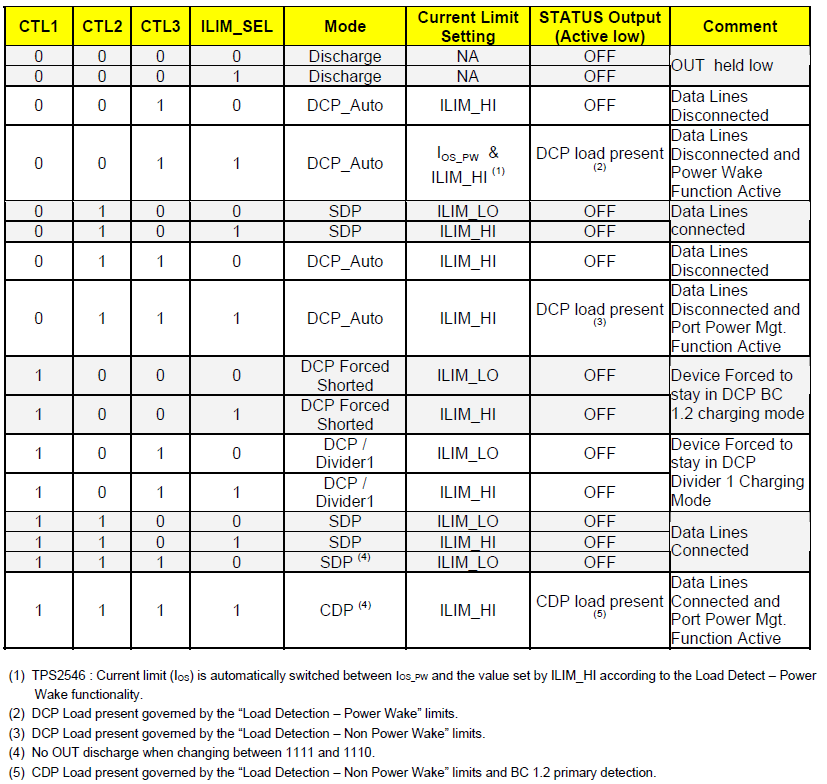Hi Team,
Please check customer questions below, thanks.
1. From Status# S0(With device) into S3/S4/S5, the TPS2546 pin9 will be low-->high and keep high. Is that correct?
2. If I changed the ILIM_LO resistor from 49k to 2Mohm, then when Status# S0(With device) into S3/S4/S5,
TPS2546 pin9 will be low-->high-->low. Is that correct?
3. From datasheet, the resistor range is 16.9K~750K, is that ok to put 2Mohm?
4. When I put ILIM_LO resistor=49k, and do Status# S0(With device) into S3/S4/S5, why pin9 STATUS can't be low?
Regards,



